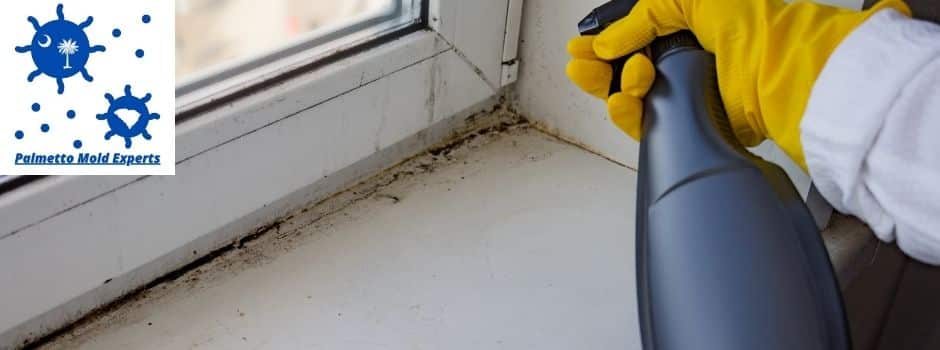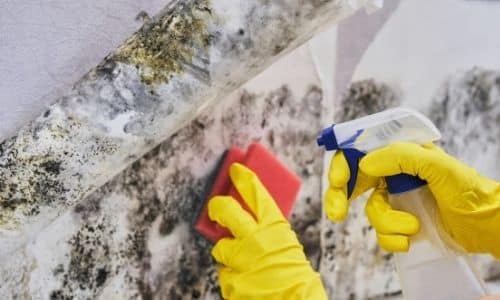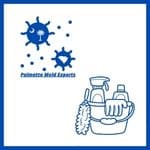
When Is Mold Remediation Necessary?
If you have noticed mold growth in your home, you may be wondering when is mold remediation needed. Mold requires warmth, moisture, and organic matter to grow, and can trigger allergic reactions. You can use our handy guide to determine when a full remediation procedure is necessary. This article will explain the stages of mold remediation. Listed below are the key points to remember:
Mold growth covers more than 10 square feet
When you see more than 10 square feet of mold growth in your home, it's time to call a professional. Even if you think you've spotted the problem yourself, the mold will most likely run deeper than you can see, making remediation an essential step. You could make the issue worse by searching for it yourself. Professionals are trained to spot the smallest of signs of mold growth, and they can find it where you might not.
Level one mold growth is relatively benign, and you don't need to hire a professional mold inspector. Level two and three mold are not harmful, but they warrant further investigation. Besides, level two and three mold are likely to become level 3 very quickly. If you discover this type of mold growth on less than 30 square feet of surface area, there's no need for remediation.
In some instances, mold growth will appear as gray spots or speckles on walls or furry islands on fabrics. These are not necessarily a sign of a larger problem. If you find gray spots under cracked windows or on damp folds of fabric, however, it's time to call a professional. Mold remediation is necessary when the growth covers more than 10 square feet. It's important to follow proper safety guidelines and to follow the recommendations of your mold inspector.
A mold inspection is important for insurance recovery and litigation purposes. It can also confirm visually observed mold. The species identified in bulk samples may help determine the cause of the mold growth. If the species is hydrophilic, it likely resulted from water intrusion (from pipe bursts, for example), or if it's xerophilic, it indicates a high relative humidity problem.
It requires moisture, warmth, and organic matter to grow
To grow, mold needs moisture, organic matter, and warmth. While humid air in itself does not promote mold growth, a high relative humidity will, as it carries spores. Air currents also carry moisture, which can reach every surface and cavity of a building. Warm surfaces will also support the growth of mold, as they contain nutrients and organic matter. Designers should consider all surfaces' temperature to prevent the growth of mold.
As a naturally occurring organism, mold needs moisture to thrive and spread. Moisture comes from leaks, flooding, high humidity, and condensation. Mold needs moisture to grow and spread and can metabolize virtually any organic material. As a result, it is vital to maintain a damp environment. Mold needs moisture to grow, so remove water leaks, keep the temperature comfortable, and clean away any organic matter.
The right environment for mold growth is crucial for its success. Its food sources include dead organic matter. Typical outdoor sources include decayed wood and organic materials. Indoors, molds feed on various building components, including paper, wallpaper glue, and dead skin cells. These sources can serve as a food source if there is sufficient moisture. However, the presence of moisture can also be a danger for your health.
During the cold winter months, mold thrives on uninsulated surfaces, such as exterior walls and closets. The temperature of these surfaces is lower than the air inside the building, so the presence of moisture can trigger a rapid growth. Furthermore, if you have a water-related incident in your building, the level of mycotoxins will increase as a result. A mold infestation is often a serious problem, and mold removal will eliminate it for good.
It causes allergic reactions
There are many symptoms associated with exposure to mold. These symptoms can be immediate or delayed. The severity of the allergic reaction depends on the type of allergy and the source of the mold. Some people have allergic reactions only during certain seasons, while others experience symptoms all year long. If you suspect that you are allergic to mold, you should clean your home of visible mold. Your doctor can conduct an allergy test to determine whether mold is the source of your allergic reactions.
Allergies caused by mold spores are common, and repeated exposure can worsen symptoms. Inhaling mold vapors can trigger asthma attacks in susceptible individuals. People with weakened immune systems are also susceptible to opportunistic infections caused by mold. In addition, mold exposure can trigger the development of asthma in children. Aside from allergy symptoms, mold exposure can also lead to chronic sinus infections.
If you notice visible mold growth, you should clean the area immediately. You can use antihistamines to alleviate the symptoms. You can also apply cortisone cream, which is available both OTC and prescription, to relieve itchiness and swelling. You should also wear protective eyewear, like N-95 respirators. If your mold growth is extensive, you should contact a professional for remediation.
The long-term effects of exposure to mold are still a subject of debate. The majority of people who suffer from mold allergy will experience symptoms within a few weeks of exposure, but the effects of long-term exposure remain unknown. People with asthma may also experience allergic reactions to mold, but it is not always immediately fatal. Nevertheless, exposure to mold spores is not healthy for anyone. In fact, some people are more sensitive to mold than others. The effects of exposure to mold will vary depending on the amount of time and intensity of the exposure.
It requires a complete mold remediation procedure
A mold remediation company will perform a thorough cleaning process to remove all traces of the mold. In some cases, they will use fogging equipment to remove odors. After remediation, they will provide recommendations on how to prevent regrowth. They will also conduct a post remediation inspection to ensure the completeness of the cleaning procedure. This will also ensure that the mold is fully eradicated.
If the source of the problem is not addressed, then mold remediation is a waste of time and money. The entire process will take one to five days, depending on the type of contaminated material, the location, and the severity of the mold. This is why a thorough inspection is essential. Once the mold removal process is completed, the affected area will be restored to its pre-mold state.
A full mold remediation procedure will include testing, cleaning, and disinfecting. If the mold is in an area that can't be reached by normal means, the company will use specialized equipment to clean it up completely. A thorough mold remediation procedure will also include repairing any damaged water plumbing systems to prevent further mold growth. To remove the mold effectively, a mold remediation company will seal off an entire room or building. Then, the company will use polyethylene sheeting to contain the contaminated area and duct tape to seal the seams.
To complete the remediation process, a mold removal company must remove all contaminated drywall, insulation, porous materials, and other surfaces. A special "micro-cleaning" process will be performed on these materials to remove any spores that have settled on them. A mold remediation company will use a biocide to kill mold and prevent it from growing in the future. Once the biocide has been applied, the mold removal company will use HEPA vacuum cleaners and damp-wiping techniques to remove the spores and clean the contaminated surfaces.
It can be difficult or impossible to remove
If you discover that your home is filled with mold, the first thing you should do is to remove it as quickly as possible. Mold can be hard to remove, but with proper remediation, you can be confident that it will be gone for good. Here are some tips to help you get started. Ensure that your home is properly ventilated, use a dehumidifier, and use a wet vacuum to remove excess moisture. If you find that the mold has gotten into porous materials, you may need to remove it and replace it. Mold remediation professionals can advise you on how to clean porous materials.
You should contact a professional mold remediation company immediately if you notice a problem. Mold can grow to be a big problem within days if you don't do something about it. If you catch it early enough, you can save money and prevent further damage. However, if you're unable to remove it, you may have to spend a lot of money on the remediation process.
The first step to mold remediation is identifying the source of water intrusion and removing it as soon as possible. To protect yourself, use protective gear and HEPA filters to keep contaminants out of the air. If you can't completely remove the mold, you can cover air vents and seal up all the materials you use to clean up. You should also keep the materials you're using for remediation in a sealed plastic bag.
There are several steps to remediate mold. The most important step is determining the source of the moisture. You'll need to identify a source of moisture and assess how the problem will be treated. It is also important to get rid of any food or water contaminated areas. Once you've done this, you'll be able to assess the cost of the remediation process. When a mold remediation process is too costly or too time-consuming, you may have to hire an expensive professional.


Need help with a mold problem in South Carolina? Find the mold service that is right for you:
- Mold Inspection
- Mold Remediation
- Mold Removal
- Mold Testing
- Commercial Mold Remediation
- Commercial Mold Removal

